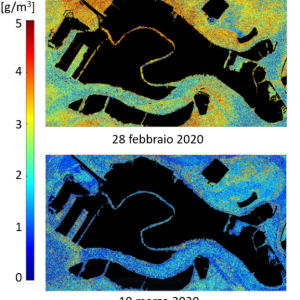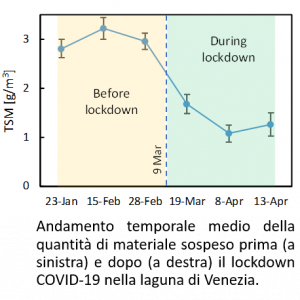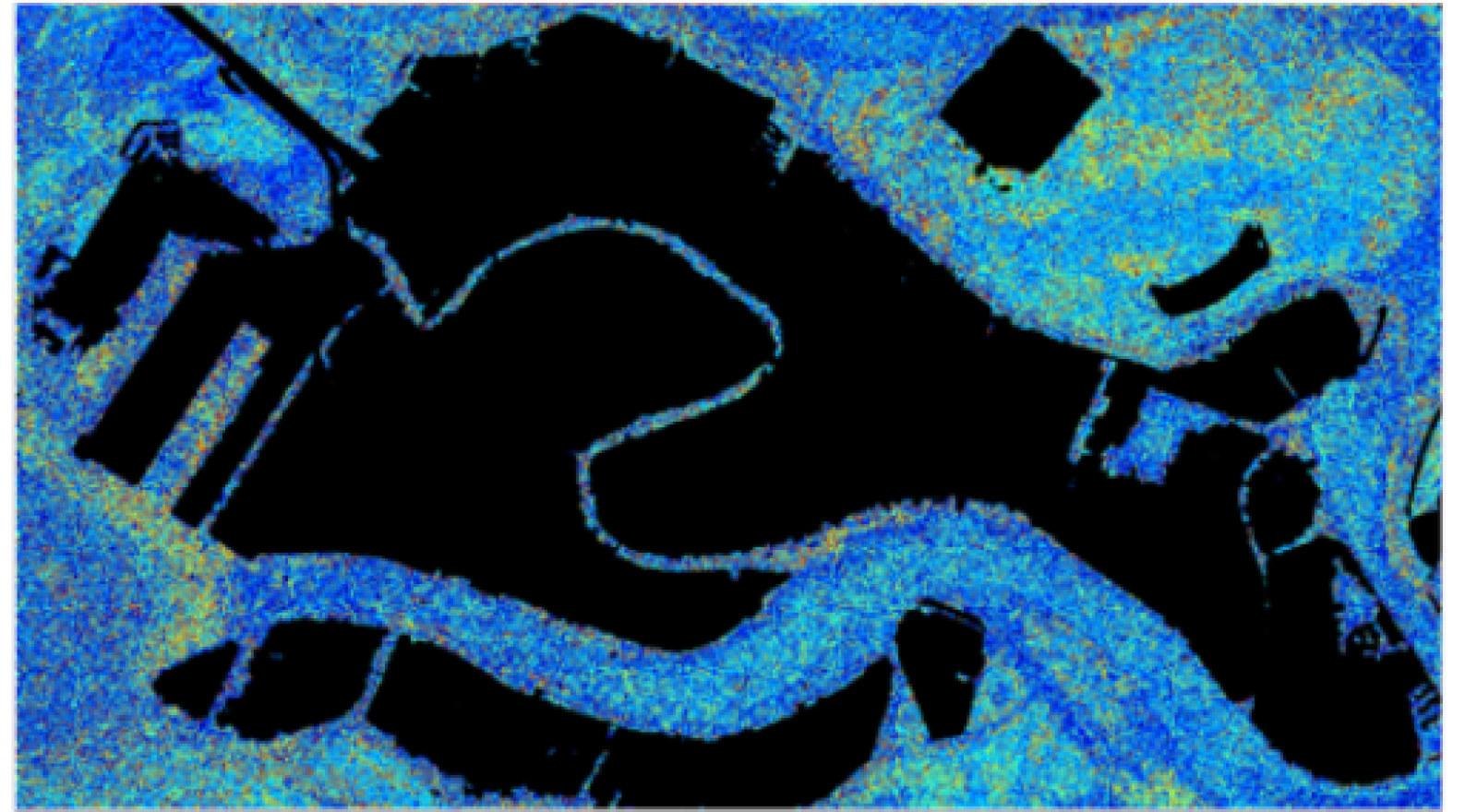More transparent water in the Venice lagoon after lockdown. A study with satellite images
The research coordinated by the Fondazione Bruno Kessler of Trento was published in the international scientific journal "Remote Sensing"
Satellite images revealed that the amount of suspended material in the water of the Venice lagoon has halved in the days following the start of the Covid-19 lockdown, resulting in an increase in the transparency of the water itself. Satellite images revealed that the amount of suspended material in the water of the Venice lagoon has halved in the days following the start of the Covid-19 lockdown, resulting in an increase in the transparency of the water itself.
It is one of the results that emerged from the study coordinated by the researchers of the Fondazione Bruno Kessler of Trento Francesca Bovolo and Milad Niroumand-Jadidi, which has been published in the international scientific journal “Remote Sensing”.

The research, in which also Lorenzo Bruzzone of the University of Trento and Peter Gege of the German Aerospace Center (DLR, Germany) took part, was based on the analysis of the images produced by the Planet Scope constellation, a set of over 130 satellites that capture images of the Earth every day, including those of inland waters.
“Some phenomena such as the sudden increase in turbidity or water transparency”, explains Francesca Bovolo, head of the FBK Remote Sensing for Digital Earth Unit “are macroscopic and therefore observable even with the naked eye. However, understanding the environmental impacts on water quality requires a systematic, accurate and quantitative study. In particular, our research carried out an estimate with a geometric detail of 3 m of the distribution across the lagoon surface of the total quantity of material suspended in water, defined as Total Suspended Matter (TSM) and measured in grams per cubic meter, using a physical inversion model adapted for the processing of satellite data with very high geometric resolution”.
In this setting, the researchers analyzed the variation in the water quality of the Venice lagoon using satellite images acquired before and during the lockdown for Covid-19, and before and after the exceptional high water event of November 2019.
The results obtained showed how the restrictions for the prevention of the Covid-19 epidemic, which among other things interrupted traffic, including maritime traffic, led to a significant reduction in the total amount of suspended material. The estimates made in the days following the total closure of 9th March show that a quantity of material in suspension almost halved compared to that of the previous days. It was also noted that the effect of the measures was evident already 10 days after the date of their issue.

On the contrary, the exceptional high tide event of November 2019, characterized by the presence of strong winds, had generated an increase in the amount of suspended material in the lagoon. In that case, compared to the previous days, the amount of suspended material had almost doubled.
“Ecosystems”, Bovolo emphasizes, “are strongly influenced by anthropogenic activities, both in the long and short term. Among these, aquatic ecosystems are one of the resources that suffers the most significant impacts both of climate change and of daily anthropogenic activities. In this context, fragile environments such as the Venice lagoon are markedly affected positively or negatively by variations in the surrounding conditions”.

